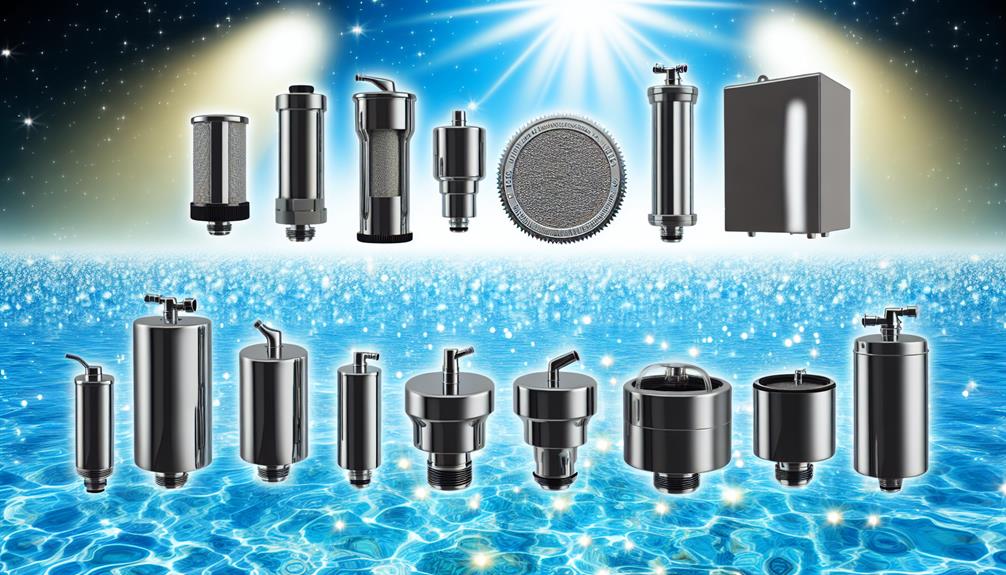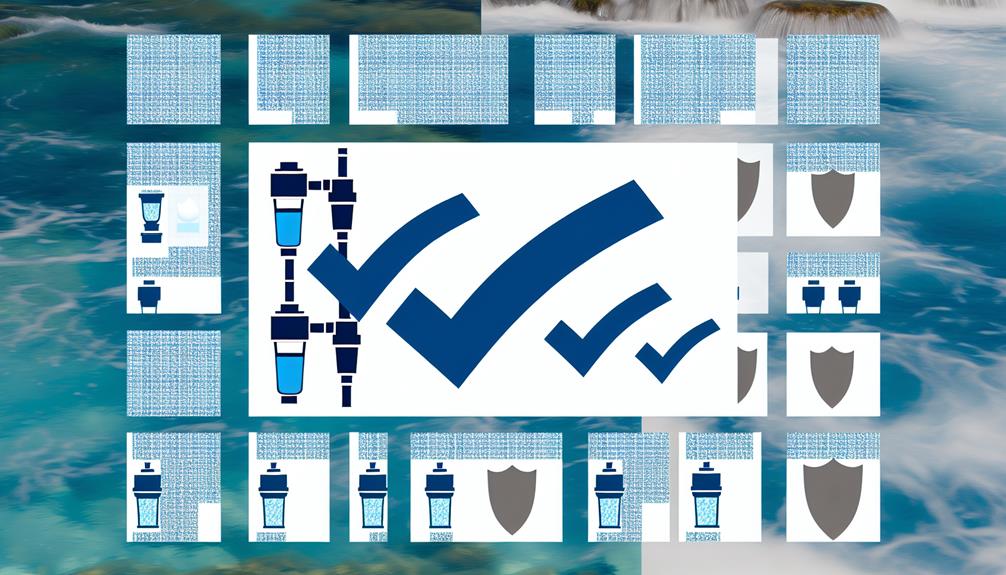Just as a foundation is crucial for the stability of a building, so too is the provision of clean, safe drinking water for the health and well-being of your workforce.
As you navigate the complexities of OSHA's regulations, you'll find that maintaining compliance isn't just about ticking boxes—it's about ensuring a sustainable and healthful work environment.
Your role in this is pivotal; from understanding the nuanced requirements for water accessibility and quality to implementing systems that dispense water free of contaminants, you're the guardian of your team's hydration.
But where do you begin, and how do you choose the right water filters that meet OSHA's stringent standards without breaking the bank?
As we explore the intricacies of compliant water filtration systems, you'll uncover the benefits they bring, not just to individual health, but to overall workplace morale and productivity.
Let's embark on this journey of compliance together, ensuring your peace of mind and the safety of your employees, one sip at a time.
Understanding OSHA Water Standards
To ensure employee health and safety, you must provide drinking water that adheres to the stringent standards set by OSHA and the EPA, safeguarding against contaminants such as arsenic, chlorine, and lead. As stipulated by the Occupational Safety and Health Administration (OSHA) Drinking Water Requirements, the water you supply must qualify as potable drinking water, which means it's suitable for consumption with no harmful substances exceeding permissible levels.
Your compliance with these standards is non-negotiable. It's critical to understand that water dispensers must be designed to prevent contamination, meaning they should be sealed or equipped with a tap. The use of open pails or lidless tanks is a direct violation of OSHA regulations. Moreover, it's your responsibility to bear the cost of providing this essential water supply, ensuring it's available for drinking, cooking, and personal uses without imposing any charge on your employees.
For workplaces lacking access to compliant tap water, installing a water filter in drinking areas is a viable solution. This measure isn't just about compliance—it's about fostering a safe and healthy work environment. Remember, your efforts in environmental protection within your facility are a testament to your commitment to your workforce's well-being.
Water Filter Compliance Requirements
As an employer, you're required to ensure that any water filters installed at your workplace conform to OSHA and EPA standards, effectively removing harmful contaminants such as arsenic, chlorine, and lead from the drinking water.
Under the Occupational Safety and Health Administration's (OSHA) regulations, part of the United States Department of Labor, and the Safety and Health Act, you must meet precise criteria for potable water to protect your employees. Here's what you need to know:
- Safety: Every water dispenser must be designed to prevent contamination and be suitable for the intended use, ensuring employees have access to safe drinking water at all times.
- Accessibility: Potable water must be readily available. It's your responsibility to provide water that meets the Primary Drinking Water standards without cost to the employees.
- Maintenance: Regularly inspect, clean, and service water systems to comply with regulatory requirements and protect employee health.
- Documentation: Keep records of all water quality tests and maintenance activities as proof of compliance with OSHA standards.
Adherence to these guidelines isn't just regulatory—it's a commitment to the well-being of your workforce. Ensure that the water filters you choose are certified to remove specific contaminants and that the filtered water is tested regularly to maintain compliance.
Implementation of Safe Dispensing Systems
Implementing sealed or tap-equipped water dispensers, such as the FloWater Touchless Water Dispenser, ensures sanitary water access for employees in compliance with safety regulations.
The Occupational Safety and Health Administration (OSHA), a division of the United States Department of Labor, mandates that water dispensers must be designed to prevent employees from sharing direct mouth contact with the spigot, thereby reducing the transmission of germs.
Under OSHA's guidelines, employers are obligated to provide potable water throughout the workplace that's readily accessible and dispensable without contamination. This responsibility includes the prohibition of certain types of water vessels that can't be sealed or those lacking a tap mechanism. Employers must also clearly label non-potable water sources to prevent accidental ingestion, ensuring the safety of all personnel.
Furthermore, it's essential to recognize that the provision of safe dispensing systems, such as the water cooler, must be at the employer's expense. OSHA expressly forbids employers from passing the cost of potable water onto their employees. Whether utilizing drinkable tap water or advanced filtration systems, the focus must remain on maintaining a safe and healthful working environment.
As you implement these systems, always prioritize safety and compliance with OSHA standards.
Monitoring and Maintenance Protocols
Regular monitoring and diligent maintenance are critical for ensuring that workplace water filters remain effective in providing clean and safe drinking water, in line with OSHA's stringent quality standards. As you invest in these practices, you're not just complying with regulations set by the Occupational Safety and Health Administration (OSHA), a branch of the United States Department of Labor; you're also demonstrating a commitment to the wellbeing of your team.
To keep your workplace water filters in top condition, follow these monitoring and maintenance protocols:
- Regular Inspections: Schedule thorough inspections to detect any malfunctions early, ensuring water dispensed is always potable and meets the standards.
- Timely Replacements: Replace filters as recommended to prevent the risks associated with non-potable water.
- Accurate Record-Keeping: Maintain detailed records of all maintenance activities to provide evidence of compliance and due diligence.
- Employee Training: Educate your staff on these protocols to cultivate a culture of safety and shared responsibility.
Adhering to these steps not only aligns with the Occupational Safety and Health mandates but also fortifies trust in your organization's commitment to a healthy workplace. Remember, the purity of water reflects the integrity of your operations.
Addressing Non-Compliance Issues
While adhering to monitoring and maintenance protocols significantly reduces the risk of non-compliance, it's crucial to understand how to address issues when they arise to maintain adherence to OSHA's water safety regulations.
If you discover non-compliance issues within your workplace, the first step is to review the set of standards provided by OSHA, a branch of the United States Department of Labor, to ensure you fully understand the requirements.
As an employer, you must provide potable, water drinkable for employees to drink, for cooking, dishwashing, and personal hygiene without passing the cost onto the employees. Should your water dispensers fail to meet these criteria—that is, not sealed, unable to close, or lacking a tap—you're required to rectify these issues promptly to avoid public health risks and potential penalties.
OSHA offers compliance assistance, including on-site consultations, to support your efforts in meeting safety guidelines. Leverage these resources to correct any non-compliance efficiently.

